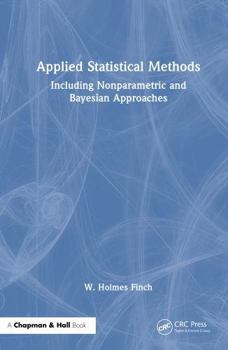Applied Statistical Methods: Including Nonparametric and Bayesian Approaches
This book is designed to provide students, teachers, and researchers with a text that includes a full range of statistical methods available to address commonly encountered research problems. Many textbooks for introductory, intermediate, and advanced statistics courses focus heavily on parametric methods. However, in practice, the assumptions underlying these methods are frequently not met, therefore calling into question their use. This book addresses this issue by presenting parametric, nonparametric, robust, and Bayesian techniques that are appropriate for research scenarios often encountered in practice and typically found in statistics courses. For each of these major topics, the standard parametric approach is presented, along with the assumptions underlying it and the methods used to assess the viability of these assumptions. Next, a set of alternative techniques for the research scenario is presented and applied to the motivating example that begins each chapter. Each chapter concludes with a summary focused on how researchers should select which method to use when and a summary of the material covered in the chapter. The chapters have motivating examples that serve as an anchor for discussion of the featured methods. The focus of the chapters is intended to be conceptual (as opposed to highly technical) to make the text useful to individuals with a wide array of statistical backgrounds. More technical material is included in each chapter for interested readers and instructors who would like to focus more attention on it. Instructors will be able to use this book as a main text in introductory, intermediate, and some specialized statistics courses such as nonparametric and robust methods. In addition, researchers and data analysts from a wide array of disciplines will be able to use this book as a primary resource in their work.
Key features of this book are as follows:
It presents a full range of statistical options available to researchers for major problems faced in the social and life sciences, health care, and business.
It explains how to evaluate a dataset to determine which statistical approach (e.g., standard parametric, nonparametric, robust, Bayesian) may be optimal.
It features a website containing datasets and computer code.





